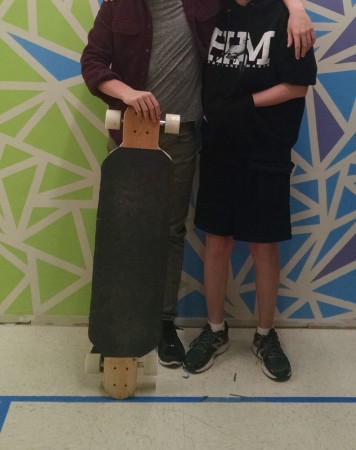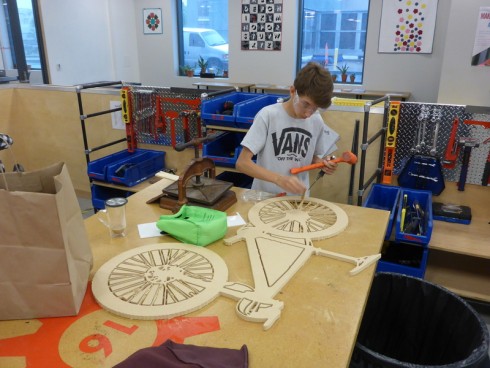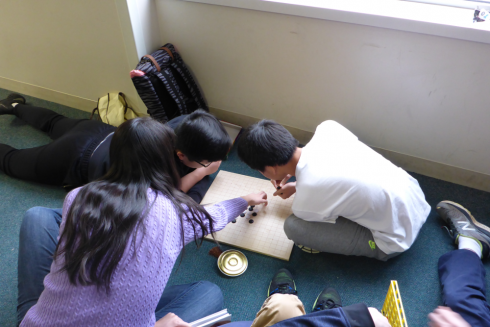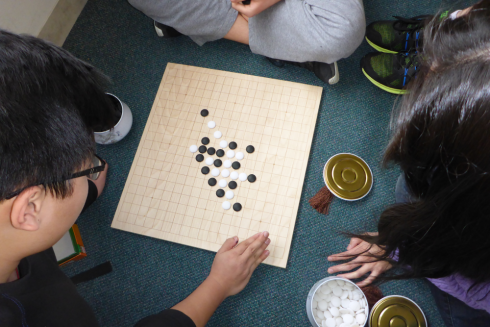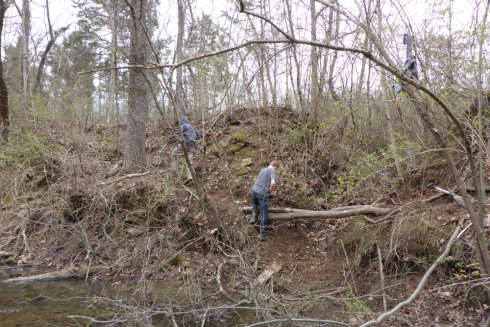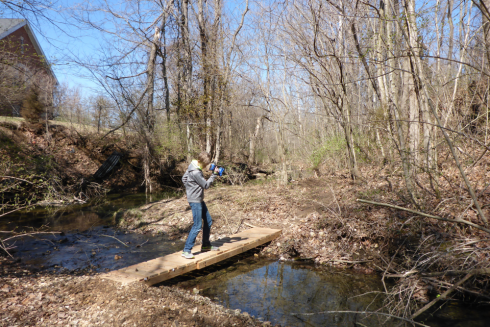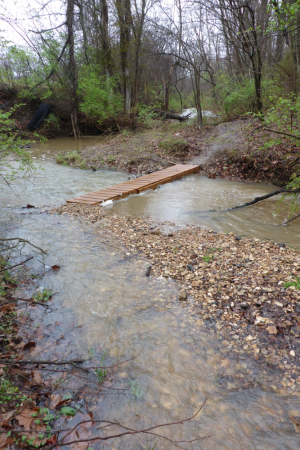Our seniors wanted to leave a mark, so after their initial application to paint the outside wall of the gym was turned down, they went with a mural on the inside–in our Makerspace.
For this project, we wanted to create a mural on the basementnasium wall. First, we measured the wall and went to Home Depot to get enough paint, paint brushes, drop cloths, and tape. Then, after cleaning the wall with a damp cloth, we covered the wall with tape in a triangular pattern similar to one we found online. After that, we used pencil to mark each triangle with a letter corresponding to one of the six colors that we bought. It took us the majority of the project to paint 3-4 coats on each triangle, and on the last day we pulled it the tape and touched up any mistakes with white paint.
Throughout this project, we found out that some people know how to paint, some people learned, and others didn’t learn. BUT IT WAS SO MUCH FUN!
-Team: Elliott, Abby, John, Zoe, Mary, Annemarie, and Josiah
-Abby R.
